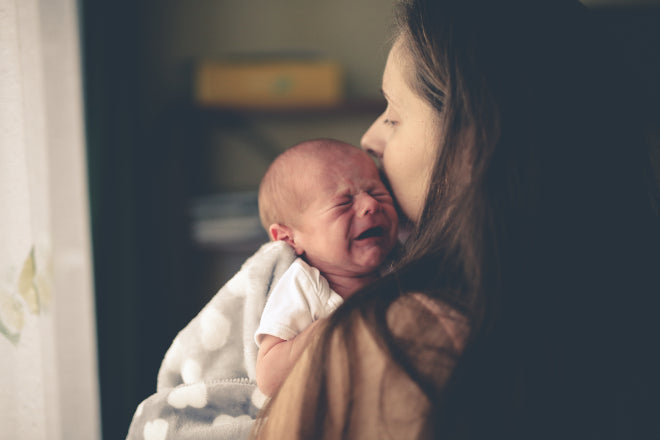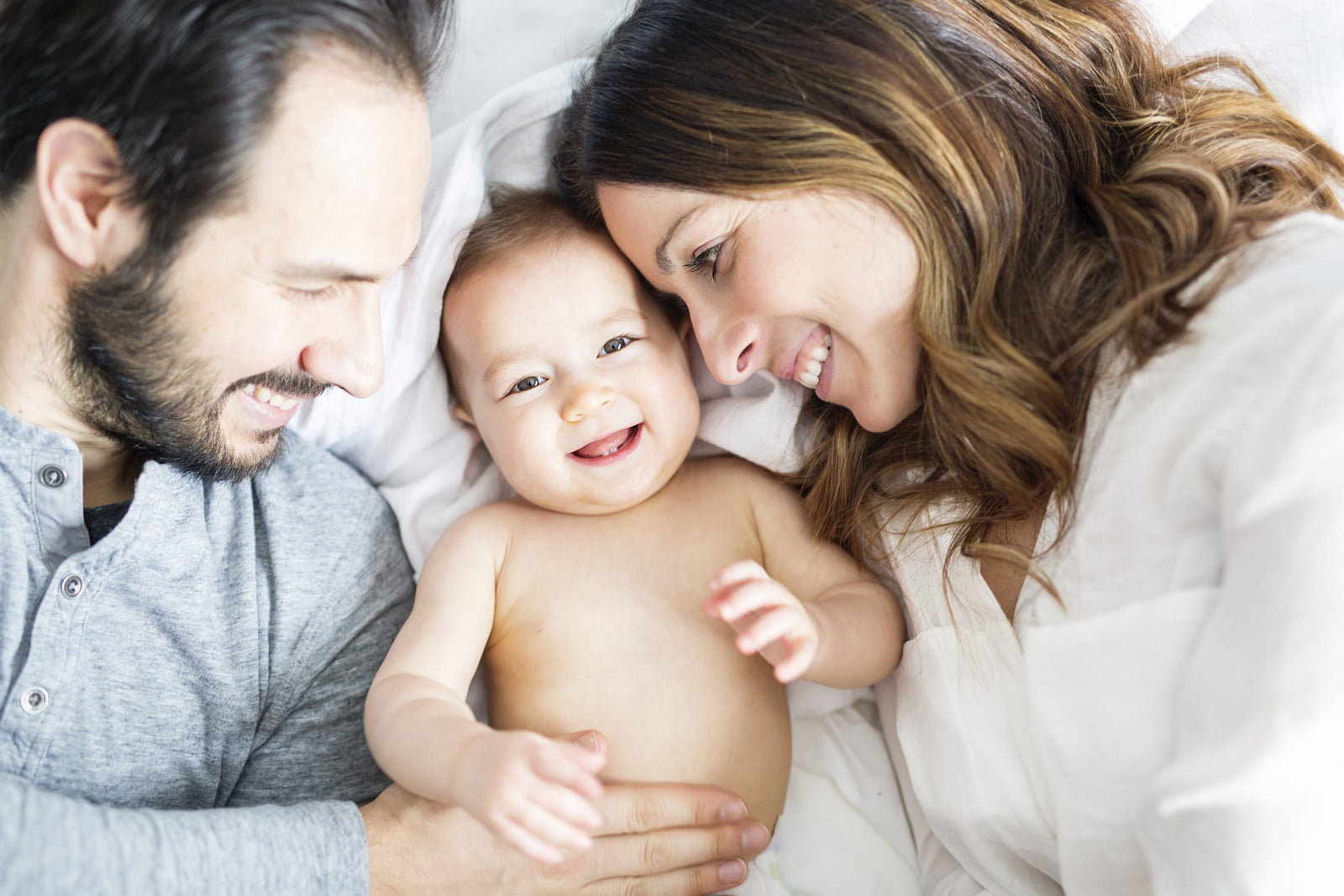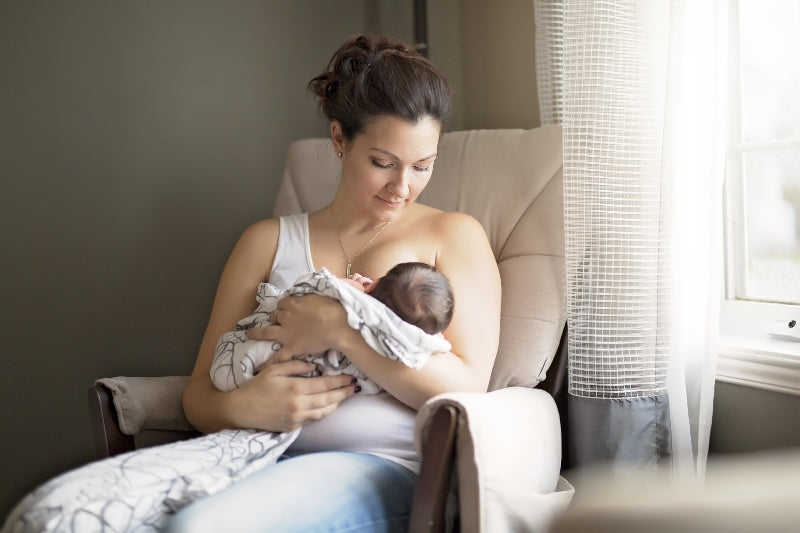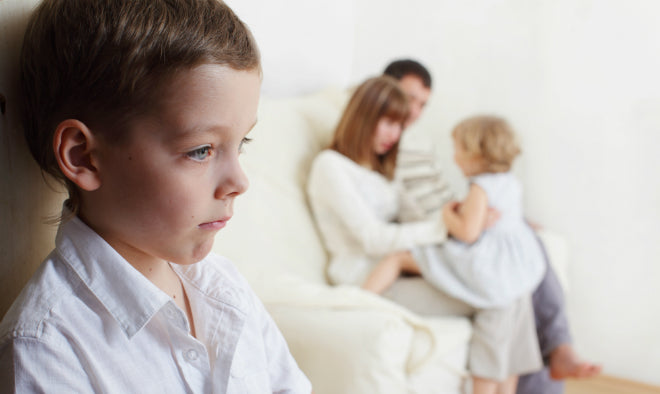" Causes and suitable measures "
For babies, crying is the most reliable way of communicating with their environment. This tells parents that they are hungry and thirsty or that their diapers are full. However, if it degenerates into a crying fit, there is usually more than a simple need behind it. Find out here how to recognize crying fits in babies, whether they are dangerous and how best to deal with them.
What is a crying fit?
First of all, it is important to distinguish crying fits in babies from normal crying. Sometimes they are also referred to as affect seizures or affect convulsions because they are a reaction to strong emotions such as fear, anger or disappointment. The most important characteristic is the intensity of the crying fit. The baby's crying becomes so intense that it is no longer responsive. From the outside, you will primarily notice that your child is crying incessantly and with increasing intensity. You may notice that the body is completely stiff and breathing stops. Eventually a state of total exhaustion sets in, often accompanied by temporary unconsciousness.
Especially the first time, it is a frightening experience when your baby cries like this. However, this extreme reaction can easily be explained by the baby's lack of ability to self-regulate. Some experiences are so intense that they have a barely controllable effect on the baby. If it then cries loudly and for a long time, oxygen deprivation gradually sets in. The glottis narrows until it finally closes completely and breathing stops. The usual consequences are blue discolored lips, convulsions and finally unconsciousness.

Crying baby
In principle, it is a clever reaction of the organism to lower the blood pressure and slow down the heartbeat in good time during crying fits. In this way, unconsciousness is deliberately induced. The eyes roll and the small body slumps limply. Now the muscles relax and breathing can return to normal. Before waking up, the increased oxygen supply can cause convulsions, known as spasms.
No need to panic
The good news is that crying fits in babies are completely harmless. Even if they look very dramatic for the parents from the outside, their child will not be harmed. The brief lack of oxygen is not a problem for either the body or the brain. The body itself takes care to pull the emergency brake in time and therefore induces unconsciousness.
Overall, the condition only lasts so briefly that the only consequence is severe exhaustion. The babies are often so tired afterwards that they first need a nap. The stretching cramps that can occur during unconsciousness are also completely harmless.

Difference to night terrors
Some parents report that their children have crying fits during sleep. Here it is important to make a distinction from the so-called night terrors. A real crying fit occurs after a nap or night-time sleep, whereas a night terror interrupts the sleep phase in the middle of it. In addition, the child is not really awake during a night terror, is unresponsive and falls asleep again by itself after a while.

Child holds its hands in front of its face out of fear
In the event of a crying fit after a nap or in the morning, your baby will first become conscious. For example, you try to wake it up or it is awakened by something else. In this half-awake state, self-regulation is even more difficult than usual. This is why an overreaction in the form of a crying fit is more likely to occur during the waking phase. Perhaps the child is frightened by the waking person or has had a dream to which it reacts. It is now important to calm the baby down.
Frequency and prevalence
Crying fits in babies occur more frequently between 6 months and 4 years of age. Before and after that, they are very rare. With increasing age, the child learns better and better to process impressions and regulate its own reactions. This is why the crying fits eventually disappear all by themselves.
By no means every child is affected. It is estimated that around 5 - 10 % of children suffer from crying fits.
The frequency varies from a single seizure per year to several per day. They generally occur somewhat less frequently in girls than in boys. In addition, it seems that particularly sensitive, lively and strong-willed children are more likely to have an emotional fit. It is possible that they experience emotions even more intensely, which overtaxes their self-regulation more quickly. Ultimately, a familial cluster can be identified. So if older siblings or the parents themselves suffered from crying fits as babies, the risk is increased for the child in question.
What to do in the event of a crying fit
If your baby cries, you can usually calm it down by satisfying its needs and giving it some good coaxing. This is hardly possible in the case of a crying fit. Nevertheless, you should calm your baby as best you can. Touch it gently and talk to it calmly. However, most children can no longer be reached during a crying fit. Sometimes it still helps to get the cuddly blanket or use a cold washing glove over the face. If your child finally falls unconscious, lay them safely on their side. Wait calmly until they regain consciousness.


Prevention is better than intervention. Parents of children who are prone to crying fits often learn to anticipate them. It is usually a typical facial expression or the parents themselves know the events that lead to excessive reactions. It is then possible to intervene before the baby cries. Distract them as much as possible and draw their attention to something positive. This could be a toy or a cell phone if necessary. Try to calm the baby before it starts crying. Calm talking and loving touch are very helpful here.

If the crying fits are caused by anger or defiance, it is all the more important that you exude calmness yourself. Do not get into an argument. It is absolutely counterproductive to further fuel the negative feelings.
What to bear in mind with frequent crying fits
In themselves, crying fits in babies are no cause for concern. However, if the fits occur very frequently or last for a long time, a pediatrician should be consulted. If your child is having a fit for the first time, mention this at the next examination. In individual cases, there may be other causes such as epilepsy.

Furthermore, you should not give up your educational convictions because of your child's crying fits. Despite everything, remain consistent but calm. If you give in and make concessions to avoid a crying fit, you are only positively reinforcing this behavior. Instead of avoiding it, it will consolidate and occur more frequently in the future.










